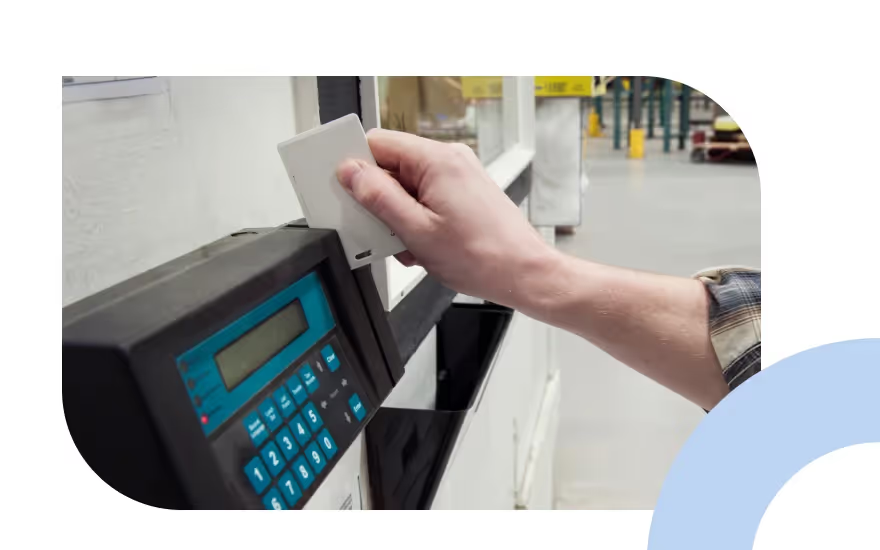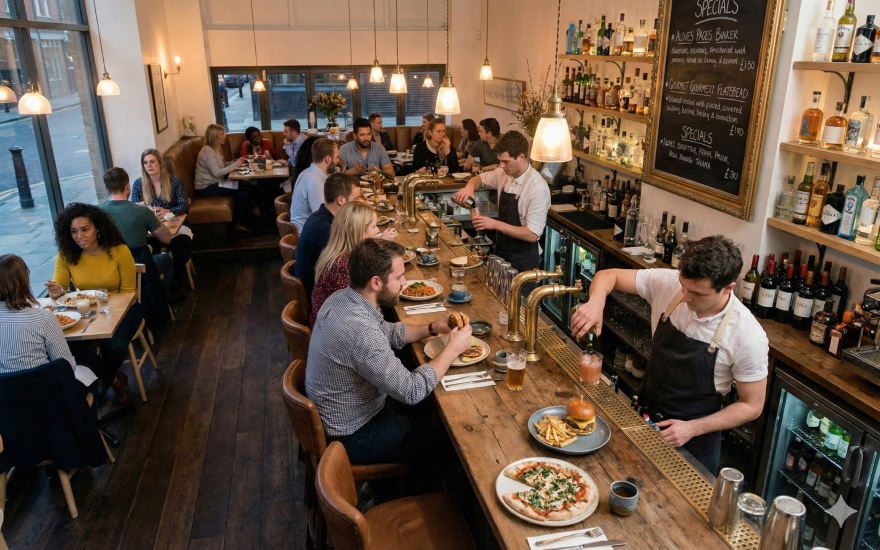Managing Overtime: 7 Strategies for Controlling Labor Costs

In the high-pressure, fast-paced world of restaurants, overtime management is a necessary but often overwhelming task. While overtime keeps your doors open during peak hours and emergencies, the associated costs can quickly eat into your profit margins. Under the Fair Labor Standards Act (FLSA), restaurant operators are required to pay employees time and a half for each hour worked over 40 hours in a week. Finding the right balance between staffing your restaurant properly and controlling labor costs can be crucial for long-term success.
In this article, we’ll be exploring 7 strategies that you can implement in your restaurant to control labor costs. Using smarter approaches for overtime management can help keep your staff happy and your bottom line healthy. Let’s dive right into it!
What is Overtime Management?
By definition, overtime management refers to the strategic oversight and management of regulating extra hours worked by employees that exceed standard working hours. Overtime management goes beyond simply tracking hours. It involves finding that delicate balance between meeting operational needs and controlling labor costs while still ensuring employee well-being and legal compliance.

Are Labor Costs Fixed or Variable?
Although restaurant labor costs might initially be seen as variable costs due to fluctuating sales and seasonality, they’re a blend of fixed and variable expenses. The fixed portion of the expenses includes salaries for management, chefs, and core staff that are paid regardless of sales volume. Whereas the variable portion covers hourly wages for servers, cooks, and seasonal staff brought in during busy periods.
What is the Average Labor Cost in the Restaurant Industry?
Generally, the average labor cost of a restaurant ranges between 25% to 35% of total revenue depending on the restaurant type:
- Quick Service: 31.6%
- Fast Casual: 28.8%
- Casual: 34.0%
- Upscale Casual: 31.0%
- Pizza: 30.1%
While it’s easy to think that labor costs only consist of salaries and wages, think again. Total labor costs should include any bonuses, overtime pay, payroll taxes, health insurance, sick days, and vacation time.
7 Strategies to Control Restaurant Labor Costs & Overtime
Now that we’ve covered the basics of overtime management and labor costs, let’s take a closer look at some strategies to control your restaurant’s labor costs.
1. Set Labor Budgets
Setting a clear labor budget is a great place to start to get a firm grip on your restaurant’s finances. A labor budget can help you determine the minimum number of employees required to have full shift coverage without relying on any overtime hours. And as mentioned above, you should aim to keep your labor costs around or under 30%. Once you have your budget created, it’s important to keep an eye on it and reevaluate as needed — especially as your business grows and revenue increases. Establishing a labor budget will give you a well-defined roadmap for guiding your staffing decisions to ensure your labor costs stay within healthy boundaries while avoiding overtime costs.

2. Demand Forecasting to Optimize Scheduling
As a restaurant operator, it can sometimes be challenging to have adequate staff during busy periods. This is where demand forecasting reports can come in handy. Demand forecasting offers a data-driven solution by analyzing data such as historical sales, seasonal patterns, and even local holidays or events to predict busy periods. These insights allow managers to create optimal staff schedules based on high-demand days and times. Demand forecasting is a powerful tool that can reduce labor costs while keeping your employees happy.
3. Monitor Labor Metrics
Working in tandem with demand forecasting, monitoring labor metrics is another data-driven approach to managing overtime. Proactively tracking key indicators such as labor cost percentage, employee hours worked, and sales per labor hour can help managers identify patterns in staffing needs. Additionally, labor metrics can give managers insight into potential workflow inefficiencies and where employee productivity can improve, further reducing labor costs. Keeping a close eye on these metrics allows you to improve your scheduling and workflow.
4. Streamline Processes
Creating streamlined processes within your restaurant can help you optimize your current workforce. Streamlining processes is often a multifaceted approach. Here are a few ways you can work towards more streamlined overtime management:
- Implement a Time Management System: Using a time management system like Push Time Tracking can accurately track your employees’ hours, helping managers to proactively identify potential overtime situations.
- Set Up Overtime Alerts: If your time management system offers overtime alerts, like Push, be sure to take advantage of it. These alerts are sent to managers when they schedule an employee into overtime or when an employee takes a shift that puts them into overtime.
- Set a Clear Overtime Approval Process: Setting clear guidelines for overtime approval fosters transparency and accountability while letting your staff know that overtime should not be the norm and requires approval.
- Cross-Train Your Staff: Having cross-trained staff equips them with skills that are transferable across various areas of the restaurant. This allows them to jump in where needed without needing additional staff during peak hours.
5. Flexible Scheduling
Offering flexible scheduling for employees gives managers a way to respond quickly to sudden and unexpected changes in customer traffic or staffing availability. Using scheduling options like split shifts and on-call rotations allows managers to adapt staffing levels to match fluctuating demand without having to rely on overtime. On top of that, flexible scheduling tends to increase employee satisfaction by accommodating their individual preferences and needs. Incorporating flexible scheduling could be a win-win for both you and your employees.

6. Offering Incentives for Efficient Teamwork
Offering incentives for efficient teamwork not only reduces the need for overtime but also fosters a more positive and engaged work environment. The goal here is to reward employees for collaborating and being more productive, such as if they complete tasks ahead of schedule. Some ways to reward employees are monetary bonuses, recognition programs, or additional time off. Rather than focusing on individual hours, your staff should be encouraged to work together as a team with the collective goal of reducing the overall workload.
7. Implement Restaurant Automation
Implementing restaurant automation in certain areas of your business can help unlock significant overtime savings. While automation technology usually requires an upfront investment, the long-term benefits are often worth it. Some technologies you can consider implementing to help reduce overtime are scheduling software, food ordering kiosks, and food preparation robots. Automation increases overall efficiency by eliminating human error and reduces the need for human staff to do repetitive and time-consuming tasks.
Final Thoughts: Overtime Management in the Restaurant Industry
When implementing these overtime management strategies for your restaurant, it’s important to remember that they’re not a one-size-fits-all solution. Experiment, evaluate, and adapt any mix of these strategies to fit your unique restaurant and team. With careful planning and decision-making, you can take back control of your labor costs and stay profitable.
Managing overtime for your restaurant can be challenging, but it doesn’t have to be with Push. Book a demo with us and learn how we can help!



